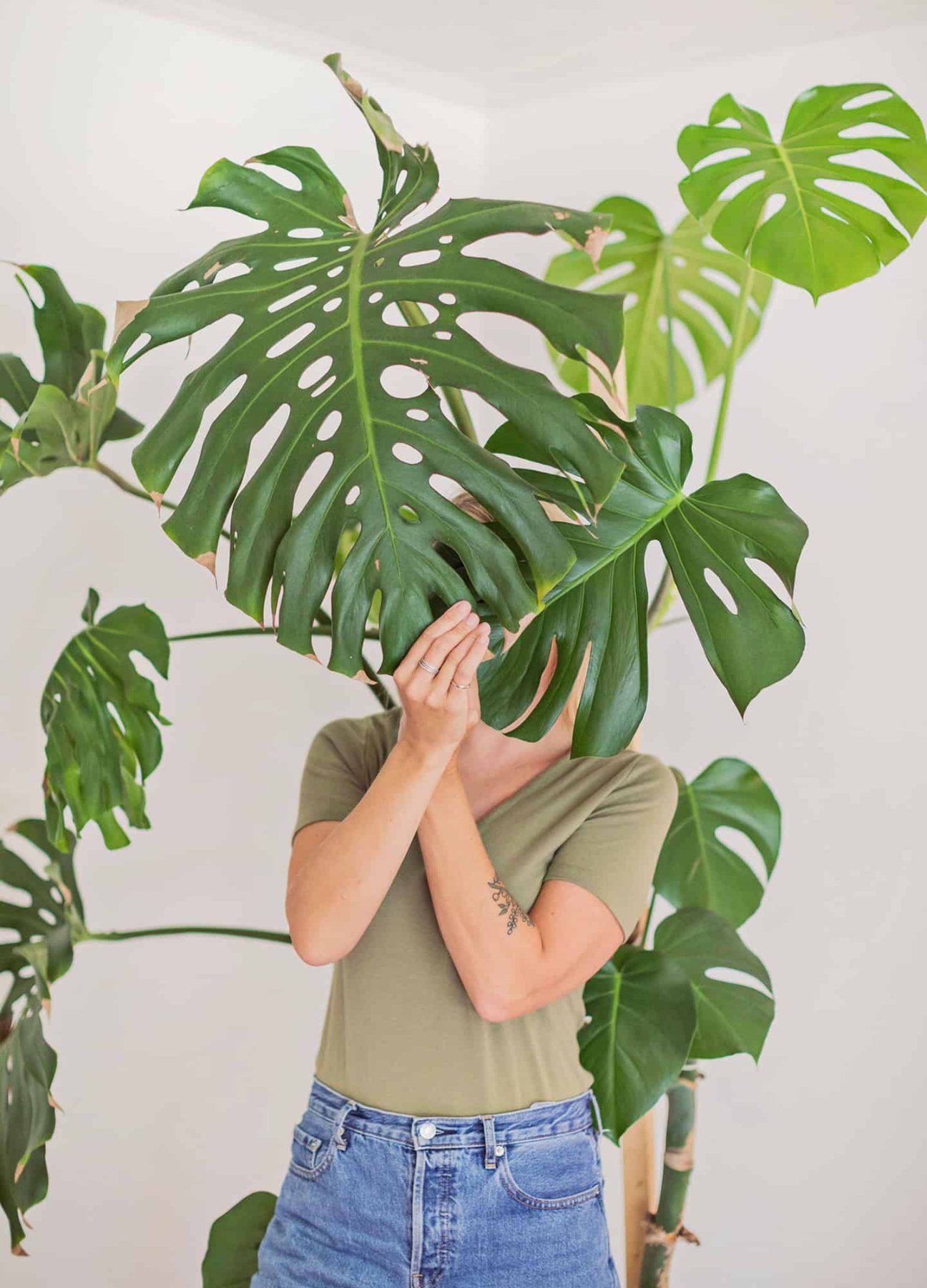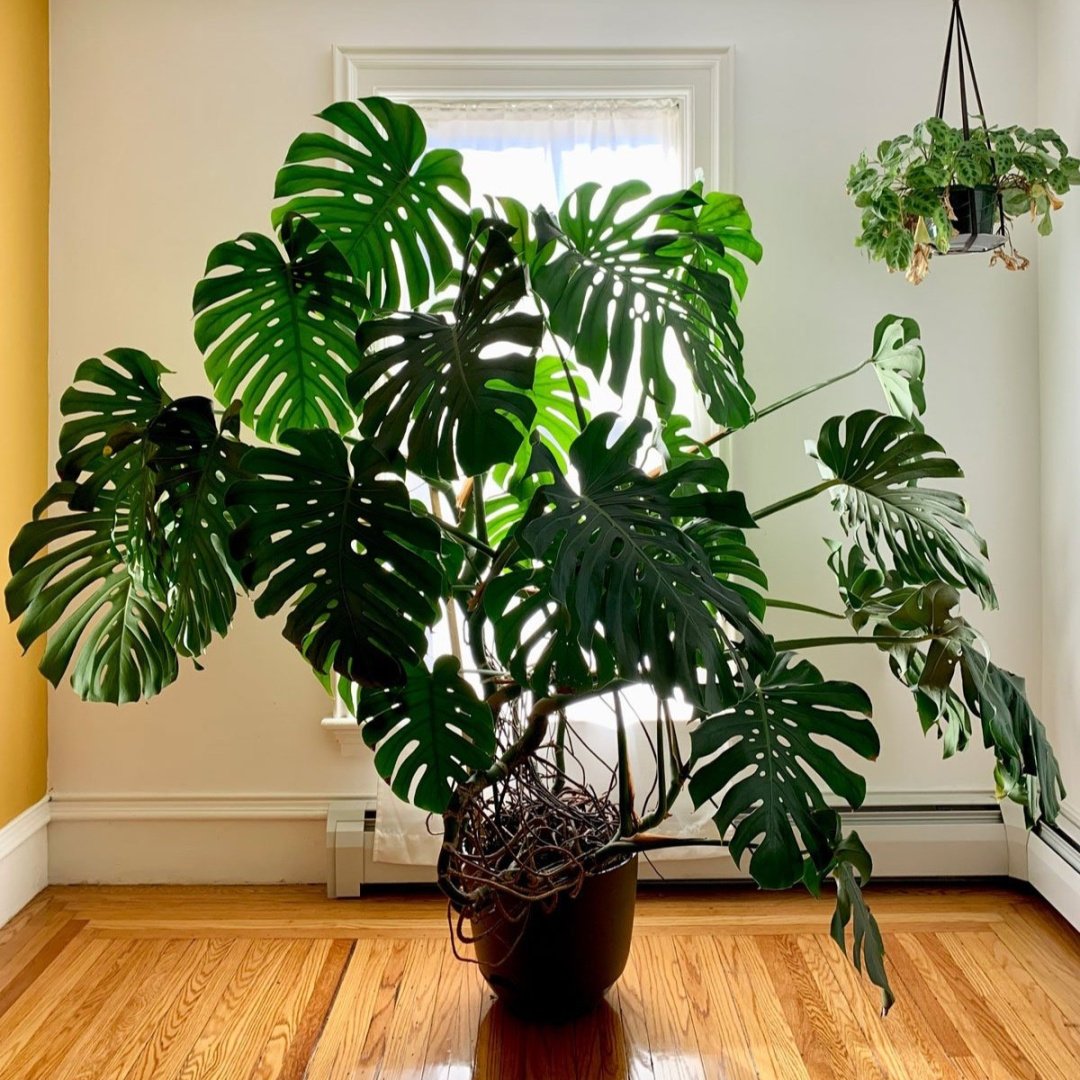Monstera Plant Care Tips: Keeping Your Jungle Vibes Alive
Hey plant pals! So, you’ve got yourself a Monstera, huh? Awesome choice! These leafy wonders are like the rockstars of the houseplant world, and for good reason. They’re gorgeous, they’re relatively easy to care for, and they just bring that whole jungle vibe right into your living room. But, like any superstar, they need a little TLC to keep shining. Let’s break down how to keep your Monstera happy and thriving.
Understanding Your Monstera: A Quick Intro
First things first, let’s talk about what we’re dealing with. Monsteras, especially Monstera deliciosa, are known for those iconic split leaves. They’re tropical plants, which means they love warmth and humidity. They’re also climbers in their natural habitat, so they appreciate some support as they grow. Knowing this basic stuff helps you understand what they need to be happy.
Light: Finding the Sweet Spot
Light: Finding the Sweet Spot

Monsteras love bright, indirect light. Think of it like this: they want to be near the party, but not right in the middle of the dance floor. Direct sunlight can scorch their leaves, so keep them away from those intense midday rays. A spot near an east or west-facing window is usually perfect. If you notice your Monstera’s leaves are turning pale or yellow, it might be getting too much sun. If it’s not growing much or the leaves are small, it probably needs more light.
Watering: Not Too Much, Not Too Little
Watering: Not Too Much, Not Too Little
Watering is where a lot of people go wrong. Monsteras don’t like soggy feet. You want to water them thoroughly when the top inch or two of soil feels dry. Stick your finger in there and feel it out. In the warmer months, you’ll probably be watering more often than in the winter. Overwatering can lead to root rot, which is a real bummer. Underwatering, on the other hand, will make your leaves droop and turn brown. So, find that balance!
Soil: Good Drainage is Key
Soil: Good Drainage is Key
Monsteras need well-draining soil. A regular potting mix with some added perlite or orchid bark works great. This helps prevent water from sitting around the roots. Think of it like this: you want your soil to be like a sponge that releases water slowly, not a bucket that holds it all.

Humidity: Bringing the Tropics Home
Humidity: Bringing the Tropics Home
Monsteras are tropical plants, so they love humidity. If your air is dry, especially in the winter, you might need to give them a little boost. You can do this by misting them regularly, using a humidifier, or placing them on a pebble tray with water. Just make sure the pot isn’t sitting in the water. Grouping plants together also helps create a more humid environment.
Support: Helping Them Climb
Support: Helping Them Climb
As mentioned earlier, Monsteras are climbers. Giving them a moss pole or trellis to climb on will encourage them to grow bigger and healthier. Plus, it looks super cool! You can gently tie the stems to the support as they grow. This mimics their natural habitat and helps them develop those big, beautiful leaves.
Fertilizing: Feeding Your Monstera
Fertilizing: Feeding Your Monstera

During the growing season (spring and summer), you can feed your Monstera with a balanced liquid fertilizer every 4-6 weeks. Dilute it to half strength to avoid overfeeding. In the fall and winter, you can skip the fertilizer as the plant’s growth slows down.
Repotting: Giving Them Room to Grow
Repotting: Giving Them Room to Grow
You’ll know it’s time to repot your Monstera when you see roots growing out of the drainage holes or if the plant is becoming top-heavy. Repotting every 1-2 years is usually sufficient. Choose a pot that’s only slightly larger than the current one, and use fresh potting mix.
Cleaning: Keeping Those Leaves Looking Fresh
Cleaning: Keeping Those Leaves Looking Fresh
Dust can build up on the leaves, which can interfere with photosynthesis. Gently wipe the leaves with a damp cloth every few weeks to keep them clean and shiny. It’s also a good way to check for pests.
Pest Control: Keeping the Bugs Away
Pest Control: Keeping the Bugs Away
Monsteras can be susceptible to pests like spider mites, mealybugs, and aphids. Keep an eye out for any signs of infestation, such as webbing, sticky residue, or small insects. If you spot any pests, treat the plant with insecticidal soap or neem oil.
Troubleshooting: Common Issues
Troubleshooting: Common Issues
Yellowing Leaves: Could be overwatering, underwatering, or too much direct sunlight.
Conclusion
Caring for a Monstera is a rewarding experience. With a little attention to light, water, and humidity, you can keep your leafy friend happy and healthy. Remember to observe your plant closely and adjust your care as needed. Each Monstera is unique, and you’ll learn its specific needs over time. Enjoy watching it grow and bring that lush, tropical vibe into your home!
FAQs
How often should I water my Monstera?
You should water your Monstera when the top inch or two of soil feels dry. This usually means once a week in the warmer months and less frequently in the winter.
Why are my Monstera’s leaves not splitting?
Young Monsteras often don’t have splits. They develop as the plant matures and gets enough bright, indirect light.
What kind of soil is best for a Monstera?
A well-draining potting mix with added perlite or orchid bark is ideal. This helps prevent water from sitting around the roots.
How do I increase humidity for my Monstera?
You can increase humidity by misting the leaves, using a humidifier, or placing the plant on a pebble tray with water.
Is it okay to put my Monstera in direct sunlight?
No, direct sunlight can scorch the leaves. Monsteras prefer bright, indirect light. A spot near an east or west-facing window is usually perfect.





